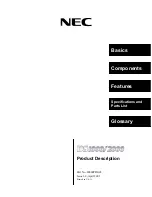
Strona
21
z
34
2.9.
Auto
‐
calibration
The
auto
‐
calibration
window
is
used
to
calibrate
the
engine
at
idle
run.
Start
the
calibration
after
the
engine
is
turned
on
and
the
lambda
probe
begins
to
work.
During
the
auto
‐
calibration
the
engine
should
work
at
idle
run.
Switch
off
air
‐
conditioning
and
lights
and
do
not
turn
the
steering
wheel.
During
the
calibration,
the
controller
will
automatically
switch
from
petrol
to
LPG.
The
controller
will
be
automatically
switching
on
selected
LPG
cylinders.
Once
the
auto
‐
calibration
is
complete,
the
controller
displays
a
message
informing
the
auto
‐
calibration
has
finished
successfully.
The
following
messages
may
appear
during
the
calibration:
Engine
rpm
too
low
[rpm]–
engine
rpm
are
too
low,
please
check
the
“Num.
of
cyl.
for
coil”
setting
No
injection
at
the
injector
–
no
signal
at
the
petrol
injector
–
check
the
connection
of
the
emulator’s
bundle.
Collector
pressure
[bar]
incorrect
–
the
collector
pressure
may
be
incorrect,
check
the
collector’s
pressure
sensor
settings.
Available
calibration
options:
All
injectors
together
–
in
the
case
of
standard
calibration
(“
All
injectors
together
”
option
is
switched
off),
the
controller
switches
one
cylinder
to
LPG
first
and
then
switches
the
remaining
cylinders
one
by
one.
If
the
All
injectors
together
”
option
is
switched
on,
the
controller
will
switch
on
all
injectors
at
the
same
time.
This
option
can
be
very
useful
in
the
case
of
some
“full
‐
group”
injection
systems,
for
which
it
is
not
possible
to
separate
individual
petrol
injectors
and
4
injectors
form
a
single
primed
module
with
two
terminals.
This
option
should
be
switched
on
as
well
if
fuel
strip
pressure
emulators
or
“Renix”
emulators
are
used.
If
this
option
is
selected,
the
“Cylinder
switchover”
parameter
will
be
automatically
set
to
0.
2.10.
Oscilloscope
Fig.
15
Oscilloscope
view
When
the
auto
‐
calibration
or
map
tab
is
selected,
the
oscilloscope
is
visible.
The
oscilloscope
shows
all
the
signals
described
in
point
The
control
buttons
have
the
following
functions
(from
left
to
right):
Start
the
oscilloscope
Stop
the
oscilloscope
Save
current
oscilloscope
display
Load
saved
oscilloscope
display
Decrease
the
number
of
displayed
points
(only
for
loaded
graphs)














































